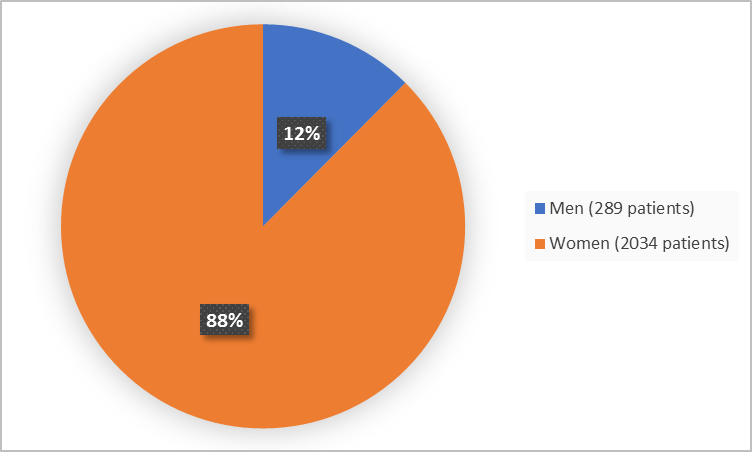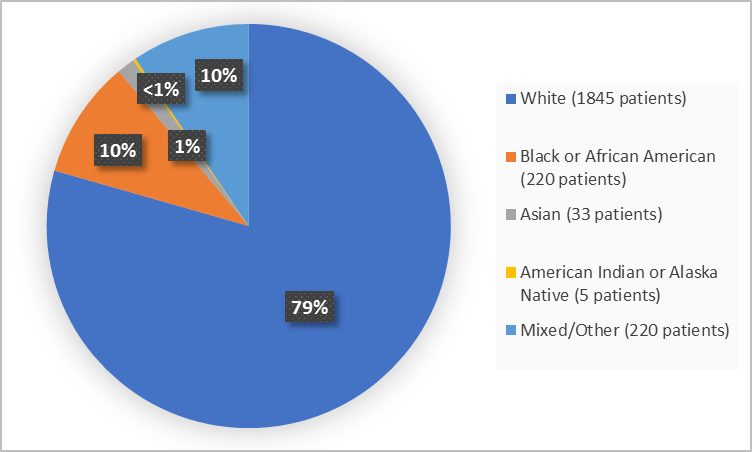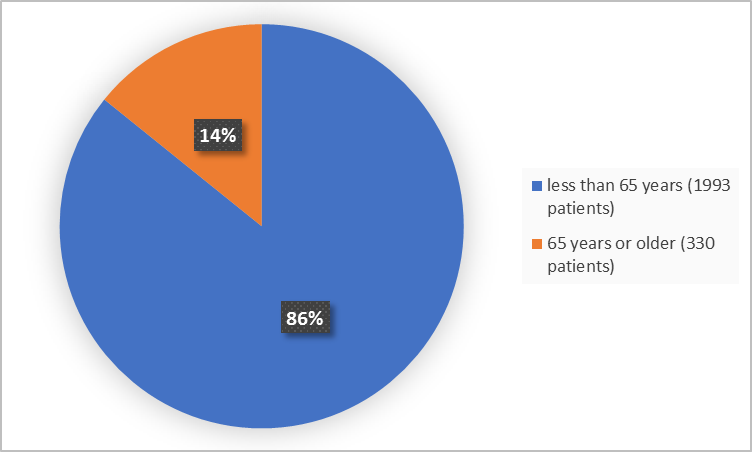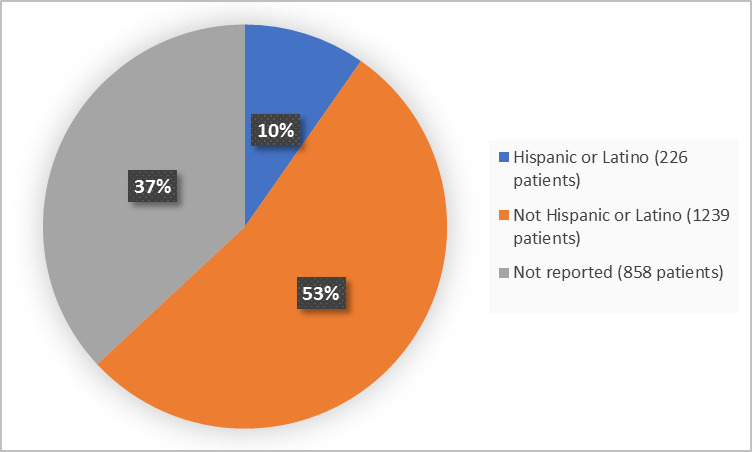A new DRUG TRIALS SNAPSHOT is now available.

Drug Trials Snapshots: BARHEMSYS
BARHEMSYS is a drug used in adults to prevent or treat postoperative nausea and vomiting (PONV). It is to be used:
- for prevention of PONV either alone, or together with a different drug for PONV prevention
- for treatment of PONV in patients who have not received any drug for the prevention of PONV, or those who have received a different drug for the prevention for PONV
BARHEMSYS is an injection given directly into the vein (intravenous infusion) by a healthcare professional over 1-2 minutes.
See more Drug Trials Snapshots or contact us with questions at Snapshots@fda.hhs.gov.
BARHEMSYS (amisulpride)
bah - rem’ - sis
Acacia Pharma.
Approval date: February 26, 2020
bah - rem’ - sis
Acacia Pharma.
Approval date: February 26, 2020
DRUG TRIALS SNAPSHOT SUMMARY:
What is the drug for?
BARHEMSYS is a drug used in adults to prevent or treat postoperative nausea and vomiting (PONV). It is to be used:
- for prevention of PONV either alone, or together with a different drug for PONV prevention
- for treatment of PONV in patients who have not received any drug for the prevention of PONV, or those who have received a different drug for the prevention for PONV
How is this drug used?
BARHEMSYS is an injection given directly into the vein (intravenous infusion) by a healthcare professional over 1-2 minutes
What are the benefits of this drug?
Patients taking BARHEMSYS experienced less nausea/vomiting and less need for additional medication to prevent or treat PONV in comparison to patients receiving placebo.
Were there any differences in how well the drug worked in clinical trials among sex, race, and age?
Subgroup analyses were conducted for sex, race, and age.
- Sex: BARHEMSYS worked similarly in men and women.
- Race: The majority of patients were White; therefore, differences in how the drug worked among races could not be determined.
- Age: BARHEMSYS worked similarly in patients younger than 65 years and patients 65 years and older.
What are the possible side effects?
BARHEMSYS may cause serious heart rhythm problems due to prolongation of heart electrical activity (QT prolongation).
The most common side effects of BARHEMSYS are increased level of prolactin hormone in blood, chills, low serum potassium level, low blood pressure during infusion, and abdominal distension and infusion site pain.
Were there any differences in side effects among sex, race, and age?
- Sex: The occurrence of side effects was similar in men and women.
- Race: The majority of patients were White. Therefore, differences in side effects among races could not be determined.
- Age: The occurrence of side effects was similar in patients below 65 years of age and those 65 years and above.
WHO WAS IN THE CLINICAL TRIALS?
Who participated in the clinical trials?
The FDA approved BARHEMSYS based on evidence from 4 clinical trials of 2323 patients undergoing surgery or experiencing nausea and vomiting after the surgery. The trials were conducted at 80 sites in the United States, Canada and Europe.
The figure below summarizes how many men and women were in the clinical trials.
Figure 1. Demographics by Sex
Clinical Trial Data
The figure and table below summarize the percentage of patients by race in the clinical trials.
Figure 2. Demographics by Race
Clinical Trial Data
The figure below sumarizes the percentage of patients by age in the clinical trials.
Figure 3. Demographics by Age
Clinical Trial Data
The figure below sumarizes the percentage of patients by ethnicity in the clinical trials.
Figure 4. Demographics by Ethnicity
Clinical Trial Data
How were the trials designed?
There were four trials that evaluated the benefits and side effects of BARHEMSYS.
Two trials (Trials 1 and 2) enrolled patients scheduled to have surgery. Patients were randomly assigned to receive either BARHEMSYS or a placebo drug at the beginning of general anesthesia. In Trial 1, patients received BARHEMSYS or placebo alone, and in Trial 2, they received BARHEMSYS or placebo in combination with one medication approved for prevention of nausea and vomiting. Neither the patients nor the health care providers knew which treatment was being given until after the trial was complete.
The trials counted the number of patients who had no vomiting and did not use additional medications for nausea or vomiting in the first day (24 hours) after the surgery. The results then compared BARHEMSYS to placebo.
The other two trials (Trials 3 and 4) enrolled patients who were experiencing nausea and vomiting after surgery. In Trial 3, patients did not receive any medication to prevent nausea and vomiting before surgery and in Trial 4 they received the medication, but the treatment did not work. In both trials, patients were randomly assigned to receive either BARHEMSYS or placebo. Neither the patients nor the health care providers knew which treatment was being given until after the trial was complete.
The trials counted the number of patients who had no vomiting and did not use additional medications for nausea or vomiting in the first day (24 hours) after the treatment. The trial compared BARHEMSYS to placebo.
GLOSSARY
CLINICAL TRIAL: Voluntary research studies conducted in people and designed to answer specific questions about the safety or effectiveness of drugs, vaccines, other therapies, or new ways of using existing treatments.
COMPARATOR: A previously available treatment or placebo used in clinical trials that is compared to the actual drug being tested.
EFFICACY: How well the drug achieves the desired response when it is taken as described in a controlled clinical setting, such as during a clinical trial.
PLACEBO: An inactive substance or “sugar pill” that looks the same as, and is given the same way as, an active drug or treatment being tested. The effects of the active drug or treatment are compared to the effects of the placebo.
SUBGROUP: A subset of the population studied in a clinical trial. Demographic subsets include sex, race, and age groups.
COMPARATOR: A previously available treatment or placebo used in clinical trials that is compared to the actual drug being tested.
EFFICACY: How well the drug achieves the desired response when it is taken as described in a controlled clinical setting, such as during a clinical trial.
PLACEBO: An inactive substance or “sugar pill” that looks the same as, and is given the same way as, an active drug or treatment being tested. The effects of the active drug or treatment are compared to the effects of the placebo.
SUBGROUP: A subset of the population studied in a clinical trial. Demographic subsets include sex, race, and age groups.

























.png)












No hay comentarios:
Publicar un comentario